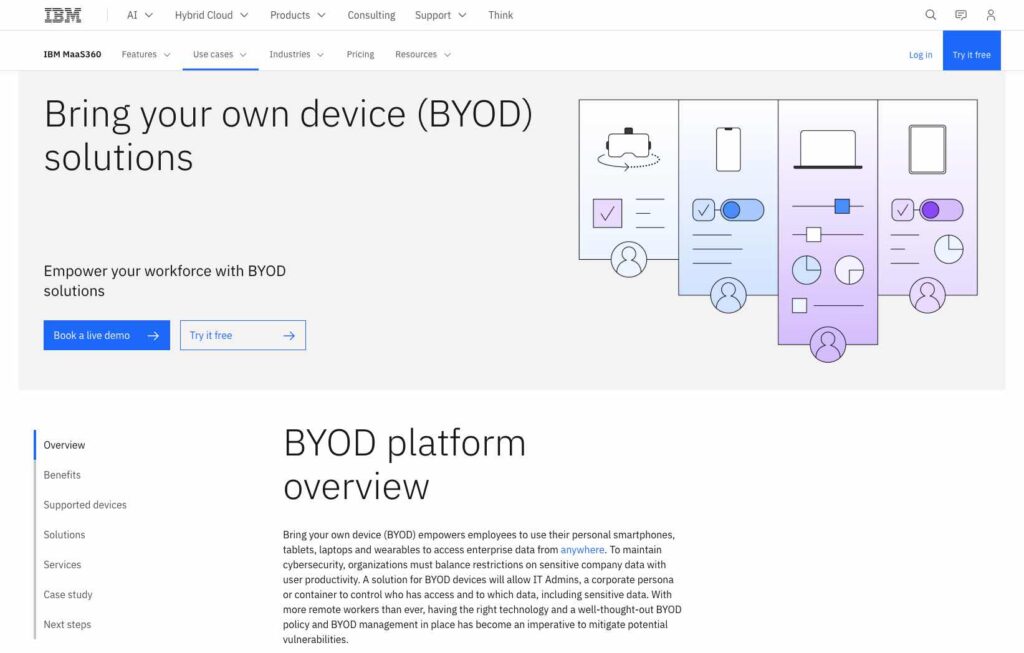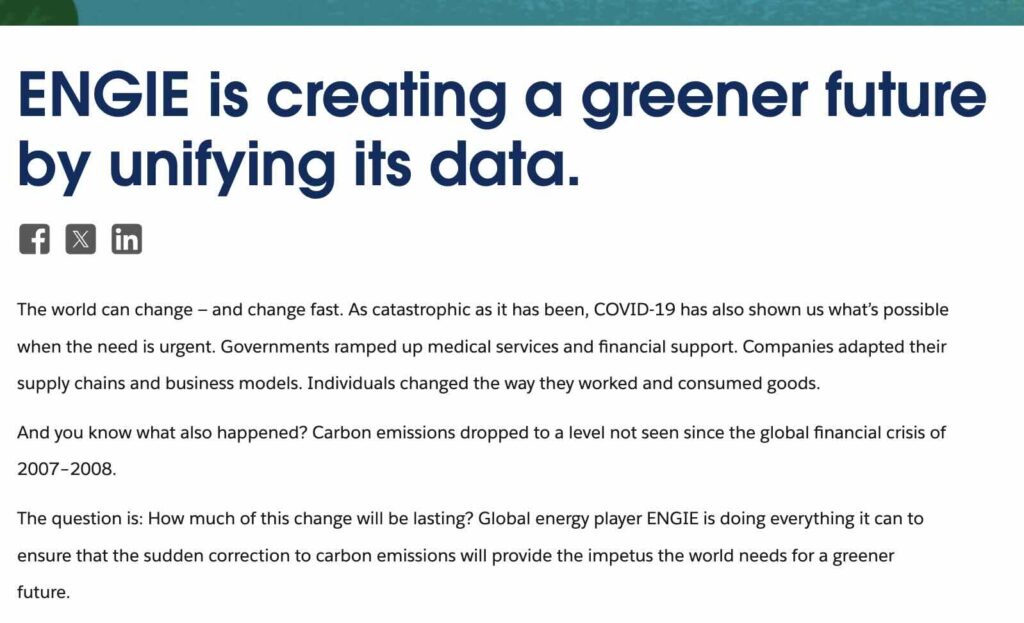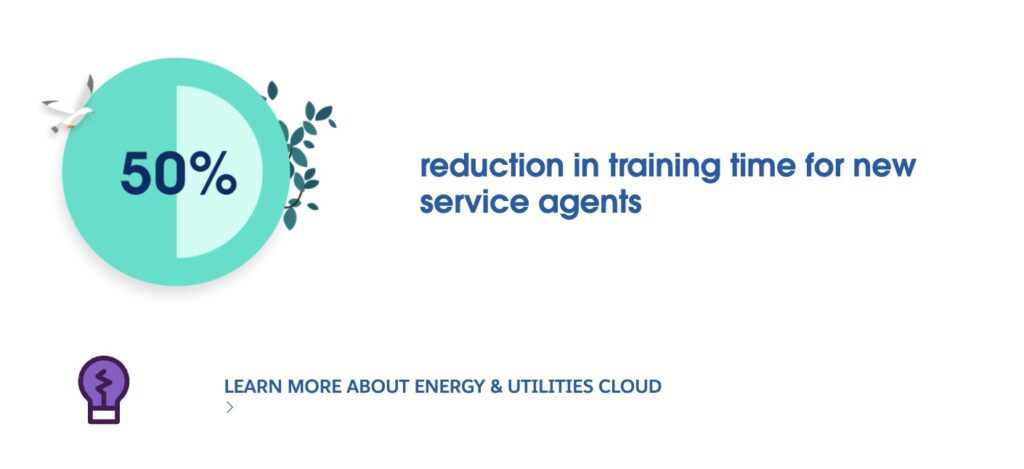Use cases and case studies focus on the real-world application of a product or solution, and both are important tools in the B2B content strategist’s toolkit. But don’t confuse them as being one and the same. They are distinctly different content types, and deploying each of them at the right point in the buyer’s journey is crucial to making sure they resonate and move your audience forward.
But how do you choose between a use case vs. case study? And what separates a good use case or case study from a really great one? We’ve got you covered. In this blog post, we’ll explain:
- The difference between use cases and case studies
- Where they fit into the customer journey
- How to make these content assets compelling and part of a connected content journey
What Is a Use Case? Definition and Examples
A use case illustrates how a product or solution solves for a particular pain point, customer type, or scenario. It frames the product in the context of your customer’s goals and careabouts, which is a powerful way to highlight its value even if customers aren’t familiar with your company.
For this reason, use cases are best used at the awareness stage, early in the buyer’s journey. They’re especially useful for search, since customers at this stage are looking for a way to solve their problem (and searching with keywords and phrases related to that problem).
Here’s an example of a use case found via search: An IT manager is looking for solutions to enable her company’s employees to use their own devices for work. She may or may not know exactly what kind of product she’s looking for; either way, she doesn’t have a specific provider in mind. Searching for “bring your own device” returns a product’s related use case, leading her to learn more about that product.

What Is a Case Study? Definition and Examples
A case study (sometimes called a customer story or customer success story) is a real-world story about how a customer successfully used a product or solution to achieve a goal. According to Forbes’ Content Marketing Statistics for 2024, case studies and customer stories are some of “the most effective content marketing formats for B2B. … Their effectiveness lies in their ability to engage and provide tangible examples.”
A case study is typically much more detailed than a use case is, and includes information such as background on the customer, pain points, objectives, how the customer deployed the product or solution, and the results. Unlike a use case, which is a straightforward explanation of how a product addresses a problem, storytelling is what drives a case study.
Because case studies are so detailed, they are most effective later in the buyer’s journey, typically at the consideration or decision stage. At this point, customers are looking at how other companies have solved the problem they’re having. They’re looking for evidence—quantifiable data and tangible results—and they’re willing to spend more time on an asset that provides it.
Let’s look at an example: The following case study explores how ENGIE, a group committed to accelerating the transition to a carbon-neutral world, used Salesforce products to unify data and build customer relationships, doing so in great detail. In fact, the entire case study clocks in at nearly 1,700 words, and includes visually engaging pull quotes and proof points.


How to Make a Use Case or Case Study Great
Despite the obvious differences between a use case vs. case study, the key to making your use case or case study great is the same: Focus on the customer’s point of view.
For use cases, this means doing keyword research and using search data and other customer research to ensure that your content targets problems and pain points that your customers actually have. In other words, use cases should not simply reflect your internal marketing terms or what you think customers should be searching for.
For case studies, this means making the customer the hero of the story. Too many marketers focus on the company or product when writing a case study. It’s true that a customer at the consideration stage is more invested in learning about your product. But what they really want to know is how that product can help them succeed. So, instead of focusing on product features, focus on customer results.
The ENGIE case study above is an excellent example. Salesforce and its products aren’t mentioned until the sixth paragraph. And throughout the narrative, the focus falls squarely on the customer and that customer’s achievements.
Use Cases vs. Case Studies in the Content Journey
We’ve highlighted some of the differences between a use case and a case study. But they also have commonalities, which you can use to build a connected content journey. One way to do this is to bring the use cases you’ve identified with search data into your case studies.
Although your customer’s product knowledge and attitude toward your company evolves throughout the buyer’s journey, their careabouts and pain points remain the same. So, referring to content they may have seen earlier in the buying process can help foster a cohesive experience.
This can also go in the other direction. A common mistake marketers make is to try to position case studies as an awareness asset. We’ve already discussed why case studies should live at the consideration stage. But what if you’ve got a really compelling case study and want to use it for awareness content?
The answer: Take a bite-sized chunk, like a quotation or testimonial, and use it in landing pages, social media banners, and other awareness content. A true case study needs lots of background to be effective (and users don’t want to invest that much time at the awareness stage). That said, a strong testimonial can grab attention all on its own.
And there you have it: all the information you need to create great use cases and case studies—and to place them where they’ll have the greatest impact in the buyer’s journey. In addition to boosting your content marketing efforts, making the most of your use cases and case studies will help you build the connective tissue that leads to a progressive and holistic content experience.
Get Great Content Results with Tendo
Tendo’s experienced content strategists can provide actionable insights on your target audience’s journey and help you create use cases, case studies, and other content assets that stand out from the crowd. Explore our content strategy services, tap us to map the buyer’s journey, or get in touch to share your unique needs.
First published October 23, 2021










